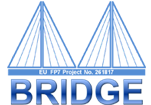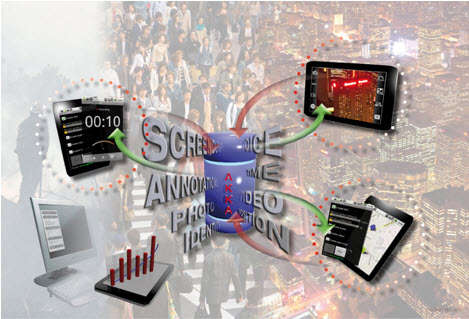BRIDGE Training System
Motivation
In crisis situations, the organisations and individuals should be able to adapt to rapid changes , at all time. This means to be able to cope with changing expectations, collaboration with new organisations, adjusted procedures for collaboration and change of supporting tools.
Realistic scenario based training followed by immediate, detailed evaluation, is one of the best ways to prepare individuals and organisations for managing crisis in the future. To prepare for the unknown the organisation must be trained and exposed to different scenarios. Doing so in a controlled way, focusing on the needs of the organisation and it’s ability to learn, preparedness can be significantly increased.
Vision
AThe BRIDGE Training System will prepare individuals and organisations , at all time, to be able to cope with changing expectations, change of supporting tools as well as change of procedures.
The essence is to develop a training concept that can adapt to these rapid changes to ensure an optimal preparedness.
This can be achieved by having a learning and training methodology supported with tools that allow for easy implementation of new situations/ scenarios.
The final BRIDGE Training System will offer a toolbox allowing scenario-based training in a fully controlled environment which also includes the use of operational equipment to enhance the realism in the training. By following a well established learning and training methodology, defining the training objectives prior to the exercise the evaluation is correlated to the organisational needs and organisational learning improved.
Methodology
To assure an optimized planning, execution and evaluation of an exercise, a learning and training process has been developed. The learning and training methodology is divided into five main activities, each with a number of sub-activities:
- Analyse
- Plan
- Execute
- Evaluate
- Gain experience
A step by step implementation of the analyse and planning activities will result in an optimized baseline for the exercise. The main activities will be to define the training objectives and building up a scenario relevant for verifying the training objectives.
Based on the training objectives, a number of criteria's will be defined assuring a structured retrieval of observations giving an optimal prerequisite for the evaluation process. A well defined learning methodology , using the information from the technical solution, gives an optimal result of the exercise.
Technology
In a management web portal, the learning and training methodology is incorporated where by others the objectives for a specific task/mission are defined as a separate activity and reporting templates created. The templates are synchronised with the clients and are made available for personnel in the field. During reporting, current observations are automatically synchronised with the central database.
Observations can comprise video, footage, voice and text in a pre-defined template. The time of the reporting, GPS position and the unique ID of the reporter are recorded for every reported event.
Managing the exercise through the web portal with near real time reports from the observers creates real time situational awareness for the exercise manager. A fast response to achieve training objectives can be made by the exercise manager depending on the incoming observations.
The template for the mission reflects the objectives and thus thematic reports can be generated. These reports can show events on a map over time and can be cross-referenced with related footage, or it can be a report from one specific individual over time.
The stored information from the scene and each relevant individual can be incorporated into the system giving an optimal prerequisite for the evaluation process.




